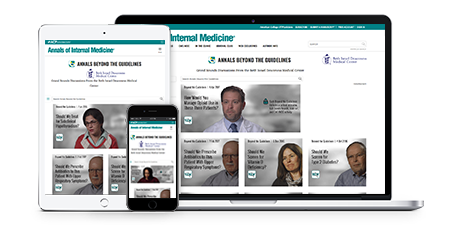Annals Beyond the Guidelines
Nearly 15% of U.S. adults have diabetes; type 2 diabetes (T2D) accounts for more than 90% of cases. Approximately one third of all patients with diabetes will develop chronic kidney disease (CKD). All patients with T2D should be screened annually for CKD with both a urine albumin–creatinine ratio and an estimated glomerular filtration rate. Research into strategies to slow the worsening of CKD and reduce renal and cardiovascular morbidity in patients with T2D and CKD has evolved substantially. In 2022, a consensus statement from the American Diabetes Association and the Kidney Disease: Improving Global Outcomes recommended prioritizing the use of sodium–glucose cotransporter-2 inhibitors and metformin and included guidance for add-on therapy with glucagon-like peptide 1 receptors agonists for most patients whose first-line therapy failed. It also recommended nonsteroidal mineralocorticoid receptor antagonists for patients with hypertension that is not adequately controlled with angiotensin-converting enzyme inhibitors or angiotensin-receptor blockers. Here, an endocrinologist and a nephrologist discuss the care of patients with T2D and CKD and how they would apply the consensus statement to the care of an individual patient with T2D who is unaware that he has CKD.



